The effects of gaslighting on victims are enormous, and only someone who has been through knows how it really feels. Today we are going to talk about what is gaslighting, what is the purpose of gaslighting someone, and warning signs of gaslighting, the effects of gaslighting, and so much more.
What Is Gaslighting?
Gaslighting is a form of psychological abuse used by narcissists in order to instill in their victims an extreme sense of anxiety and confusion to the point where they no longer trust their own memory, perception, or judgment.
The techniques used in “Gaslighting” by the narcissist are similar to those used in brainwashing, interrogation, and torture that have been used in psychological warfare by intelligence operatives, law enforcement, and other forces for decades.
The intention is to, in a systematic way, target the victim’s mental equilibrium, self-confidence, and self-esteem so that they are no longer able to function in an independent way. Gaslighting involves the abuser to frequently and systematically withhold factual information from the victim and replacing it with false information.
Because of its subtlety, this cunning Machiavellian behavior is a deeply insidious set of manipulations that is difficult for anybody to work out, and with time it finally undermines the mental stability of the victim. That is why it is such a dangerous form of abuse.
The emotional damage and effects of Gaslighting are huge on the narcissistic victim. When they are exposed to it for long enough, they begin to lose their sense of their own self.
Related: Signs Of Gaslighting: 5 Things Sociopaths and Narcissists Say to Make You Feel Crazy
Unable to trust their own judgments, they start to question the reality of everything in their life. They begin to find themselves second-guessing themselves, and this makes them become very insecure about their decision-making, even around the smallest of choices.
The effects of Gaslighting are – that ultimately, the victim becomes depressed and withdrawn, they become totally dependent on the abuser for their sense of reality. In effect, the gaslighting turns the victim’s reality on its head.

Where Does The Term “Gaslighting” Come From?
The term “Gaslighting” comes from the 1944 Hollywood classic movie called Gaslight. The film starts with the murder of the famous opera singer Alice Alquist in London.
The perpetrator was after the star’s jewels, but before he could get them, he was interrupted by her young niece Paula (played by Ingrid Bergman); a child that Alice had reared after the death of her own mother.
To help her get over the trauma of Alice’s death, Paula is sent to live in Italy, where she studies opera with her aunty Alice’s old teacher for several years.
While in Italy, she meets a charismatic older man named Gregory Anton (played by Charles Boyer), they have a whirl-wind romance, and very soon she marries him. He persuades her that they should return to London to live in the house bequeathed to her by her aunt.
When they arrive, hidden in a book, Paula finds a letter addressed to her aunt Alice, it was from a man called Sergius Bauer. The letter was dated two days before the murder.
Gregory reacts violently to the letter but recovers his composure quickly, and justifies his outburst as vexation at seeing his lovely bride relive bad memories.
Once Alice’s things are removed into the attic, Gregory’s diabolical psychopathic behavior becomes very bizarre indeed.
Almost immediately he sets out, systematically and methodically, to deliberately drive Paula insane by psychologically manipulating their environment covertly; for example, when a picture is missing from the wall, Gregory tells her that she took it, but Paula cannot recall having done so.
Secretly, Gregory gains entry into the attic and begins to tamper with the gas light there, causing the rest of the lamps in the house to become dim.
When Paula mentions hearing footsteps coming from the attic and seeing the lights dimming for no apparent reason, he tells her it’s all in her imagination, and that he does not see any change in the brightness of the lights.
He does not stop there; he resorts to other means of deception to further confuse his wife.
For example, he fires his wife’s trusted elderly maid, replacing her with a younger one (Nancy) that he can seductively control.
When Paula complains of feeling hurt and humiliated by his behavior with Nancy, he tells her he is only being friendly. He states that in Europe no woman would feel humiliated for such a trivial act.
Convinced that the wife is insane, Nancy begins to treat her with contempt, and Paula can feel her loathing, which further distresses her. He then takes command of all outside influences so that he has complete control over Paula, making it easier to manipulate her sense of reality.
Of course, he pretends to have a genuine concern for Paula, but the bottom line is that he is only concerned about isolating her.
Having isolated her from those within the house, he then precedes to take command of all outside influences so that he has complete control over her. He stops all visitors, and he does not allow her to leave the house.
He implies that he is doing this for her own good because her “kleptomania and imaginings” are due to her nervous disposition.
On the rare occasion when they do go to a gathering at a friend’s house, he shows her his watch chain, from which his watch was missing. When he searches her handbag he mysteriously finds it there.
Horrified, she becomes so hysterical that Gregory has to take her home immediately. She is convinced that there is something very wrong with her and that it is best that she no longer goes out in public.
Gregory’s overall goal is to drive Paula out of her mind so that he can have her certified insane and institutionalized.
He continually tells her that she is ill and fragile, until confused and scared, Paula begins to act more erratically, and she starts to internalize that she is becoming the fragile person that he says she is.
He even begins to rearrange items in the house, and then he accuses her of “always losing things”. Cruelly, he tells her that she is losing her memory. Knowing that her mother had died insane, to demoralize her further by viciously convincing her that she has inherited her mother’s bad genes.
The more she doubts herself, the more desperate she is for her husband’s approval and love, but he rejects her, insisting that she is insane.
With a combination of seduction, deception, isolation, bullying, and rejection, reluctantly Paula starts to accept that she is losing her mind, and she becomes totally dependent on him for her sense of reality.
Unbeknown to Paula, Gregory is not who she thinks he is, little does she know that in fact, he is her aunt’s murderer, Sergius Bauer. It was no coincidence that he happened upon her in Italy.
He had deliberately gone to search her out with the intention of seducing her into marrying him. His main objective was to gain entry into the house in London where he could continue his search for Alice’s jewels.
It was his rummaging in the attic for the jewels that Paula had heard, and it was he that had caused the flickering of the lights (from the attic) when he reduced the flow of gas to the downstairs lights.
She had become an impediment to his search, so he needed her certified insane and institutionalized so that he could be free to find his treasure.
He came very near to realizing his goal, but by some chance encounter Paula meets Inspector Brian Cameron of Scotland Yard (acted by Joseph Cotten), who was an avid admirer of her Aunt Alice.
He tells her that she is not going out of her mind, but that she is beings slowly and systematically being driven out of her mind by her husband.
Together with Paula, and with the support of the old housekeeper (who had suspected the master of causing these events), he opens the “cold case”. The drama reaches its final conclusion when he arrests Gregory just as he has found his treasure of the long-lost jewels.
What Is The Purpose Of Gaslighting?
As you can see, this “Gaslighting Tango” is a form of psychological warfare that is both deliberate and progressive in nature between one individual (the gaslighter) and another (the gaslightee).
The Gaslighting Effect involves an insidious set of psychological manipulations that are carried out gradually in stages, and repeated time after time, in order to undermine the mental stability of its victim. It is truly a convoluted dance, where finally the unsuspecting gaslightee believes that they are going crazy.
Anyone can become the victim of these gaslighting maneuvers; age, intelligence, gender, the creed is no barrier against narcissistic abuse of this kind.
It does not only happen in romantic relationships (such as Paula & Gregory above), it can occur in all different types of relationships: between parent and child, siblings, friends, and work colleagues.
Actually, it can happen between any two people from any walk of life if the intention is there.
The gaslighting, as a harassment technique, starts with a series of subtle mind games that intentionally prays on the gaslightee’s limited ability to tolerate ambiguity or uncertainty. This is done in order to undercut the victim’s trust in their own sense of reality and sense of self, thus resulting in confusion and perplexity for the victim.
Even when the victim is bewildered and left wondering, “What just happened there?”, there is a reluctance to see the gaslighter for what they are, actually, it is this denial that is the cornerstone of the gaslighting relationship.
Related: Victim Of A Narcissist: The Toxic Attraction Between An Empath And A Narcissist
The “Puppet Master’s” Web of Deceit
Narcissists are puppet masters who manipulate their victims for personal gain. With precision, they are able to “pull the strings” of their victims without detection, and render them helpless.
In order to understand how a person can become a victim of a narcissist in the first place, it is important to know that the narcissist has many faces (the proverbial man or woman for all seasons).
Different faces are required by the abuser as they lead the relationship through different phases; The Idealization Stage, Devaluation Stage, and Discard Stage.
The good news is that the gaslighting does not happen all at once, it happens in stages, which means that if one suspects (in the early stages) that they are being gaslighted, they can protect themselves by walking away (physically or metaphorically).
However, one needs to be informed as to what those stages look like, in that way, the individual will be able to understand and identify what is happening at these different stages.
With this information, one will be able to spot if they are being gaslighted in any interpersonal relationship (whether it is at home, work, or socially), and guard themselves by keeping the narcissist out of their energy field.

Gaslighting Techniques (3 Stages)
1. The Idealization Stage
During the initial “idealization stage”, the narcissist puts on their “best face” in order to mold their victim into a symbiotic relationship with them as their narcissistic supply. At the beginning of the relationship the narcissist showers the victim with attention, they are loving, charming, flirtatious, energetic, exciting, and great fun to be with.
They appear to be so happy and interested in the relationship, and the unsuspecting victim enjoys every moment with their new charismatic partner.
They love how the narcissist is so beautifully intense and how they get drunk on life, and they too want to drink this elixir with them.
Intense bonding begins for the victim, and innocently, they also believe that the partner feels the same way about them and that the relationship is reciprocal, but this is the narcissist’s biggest deception.
Caught up in this alluring state of euphoria, the victim becomes “hooked” by the gaslighter’s exuberance and grandiose exaggerations.
In this kind of relationship, victims are known to experience biochemical changes in the body and structural changes in the brain.
These exciting hooks create a release of chemicals (endorphins) in the brain, and it is these endorphins (or pleasure substances) that make the victim feel euphoria in the first phase of the relationship.
Like any addict, they become addicted to that high, and very soon they find themselves hooked emotionally to their narcissistic suitor too. However, this honeymoon phase is only an illusion, all smoke, and mirrors.
Having expertly determined the victim’s strengths and weaknesses, the “Idealization Phase” is over, and it is time for the devaluation stage of the gaslighting to begin. From here on in, the narcissist seems to turn cold, unfeeling, and even bitingly cruel.
2. The Devaluation Stage
The relationship has now shifted into the “devaluation phase”, and it is as if a lethal freak fog has descended over the relationship. Almost overnight the narcissist becomes decisively cold and uncaring.
The effects of Gaslighting using this technique are that the victim’s fall from grace is a hard one, they cannot seem to do anything right anymore; the narcissists loving words turn to criticism, everything the victim tries ends in a negative effect, and they find themselves devalued at every turn.
Totally confused, the victim has no idea what is happening, and they become increasingly stressed, unhappy, and depressed with the situation. The roller-coaster relationship leaves the victim in a state of constant chaos, as if always “walking on eggshells”.
All their energy is directed at defending themselves, so the narcissist is not getting the positive attention that they crave; this is likely to be the time when the narcissist starts to look for a fresh provider of narcissistic supply.
The narcissist gaslighting is now at its peak, and there is no reasoning with them. Confused by the narcissist’s bizarre behavior, the victim works harder and harder to please their abuser in the hopes of getting the relationship back to where it was at the start when it felt safe.
Deprived of their “narcissistic drug”, the victim is suddenly thrown into strong withdrawal symptoms.
They are distraught with anxiety, turned inside out with confusion, and bereft of what they thought they had, a soulmate.
In order to cope with the pain of this deep wound of abandonment and rejection, they escape into a range of unconscious defense mechanisms (a mix of denial, rationalization, infantile regressive patterns, cognitive dissonance, trauma bonding, etc.).
Alone and isolated from the real world, these behaviors become their only way of surviving the narcissistic abuse, and the effects of gaslighting they are now experiencing.
No matter what they do, they only seem to create narcissistic injury to this stranger, and each time they do that, they inadvertently release an almighty rage down upon themselves (without even knowing how they are doing it).
By merely engaging in these survival tactics, the victim becomes the hostage that is overly dependent on their captive (Stockholm Syndrome), where unpredictability and uncertainty are the order of their day.
As a result, they are now caught in the macabre dance with the narcissist’s pathological grandiose self, where hell reigns supreme, and they regress into infantile regressive patterns of behavior (Regressed Infantilism).
At this stage, they are most likely suffering the effects of Narcissistic Victim Syndrome (NVS), where they are reduced to a shadow of their former self. Finally, they are at the mercy of the whims and pleasures of their “puppet master”.
The narcissist despises who their supply person has become; they view them as powerless, inferior, and worthless victims, but at the same time, their worthless prey is providing them with a bountiful amount of narcissistic supply.
Therein lays the paradox; the more the victim shows their distress, the more they become a narcissistic supply for the abuser, and the more important and powerful the abuser gets to feel.
The more important and powerful the abuser feels, the more blatant their verbal and physical violence becomes. This “pull-push” scenario leaves the narcissist acting in a way that says, “I hate you, but don’t you dare leave me or I will kill you”.
They will react to any perceived movement away from them as a threat to their narcissistic supply, therefore any show of self-determination by the victim will surly be devalued.
The narcissist is merciless in the way they devalue the victim. Devaluation of the victim can be delivered through many different forms and levels of attack; through victims’ own attachment needs, intellectual capabilities, physical body, sexuality, creativity, etc.
By this time, like Pavlov’s dogs, the victim has been conditioned, and appears to the outside world that they are willing partners in the narcissist’s “convoluted dance”.
Even if they do manage to escape from that narcissistic individual, they are at high risk of future re-victimization and entrapment with other narcissists, because they are primed in a way that other narcissists can spot.
Related: Signs You’re Arguing With A Psychopath.
3. The Discarding Phase
In this phase, the game comes to its final conclusion. What started out as the idealization of a victim by the narcissist, is doomed to end with the idealization of the narcissist by the victim’s over-dependence.
Once this happens, the narcissist’s ardor for the game has dampened, in their eyes, they have already won the contest, and the fun is over. By this time, the narcissist is totally indifferent to any needs or wishes that the victim may have, in effect, they no longer exist in their mind.
Not so for the victim, they are left confused and raw with emotion and are eager to find solutions in order to “fix” the dying relationship.
However, the narcissist resists all attempts to rescue the relationship, they will bully with silence, or if there is any kind of response, it will be brutally cold.
In effect, the victim has become “worthlessly inferior” to them; they know they have drained the victim dry, that they have now outlived their usefulness, and now it is time for the narcissist to move on to the next source of supply.
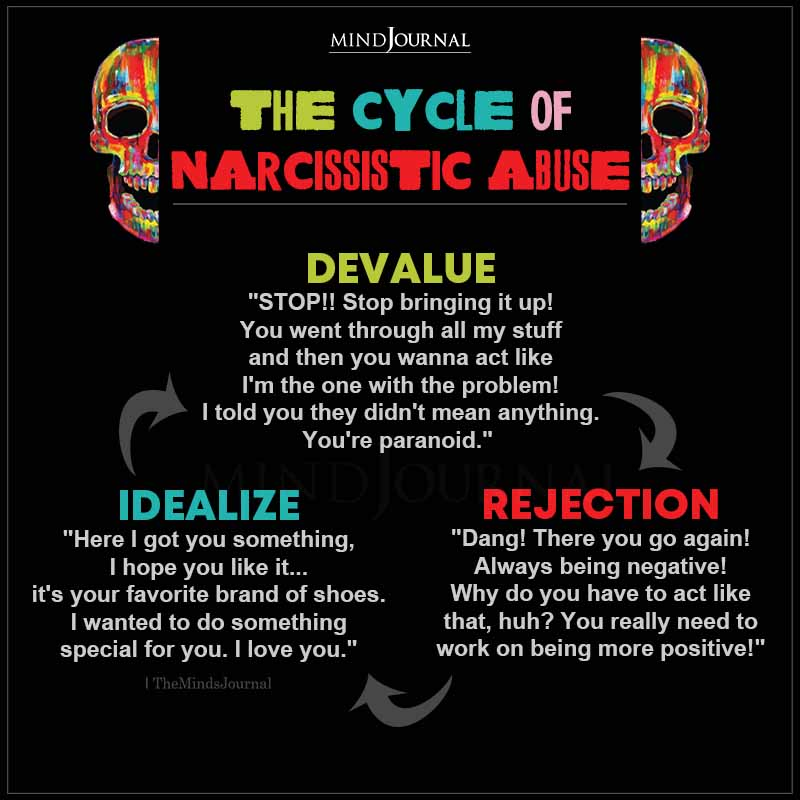
The Plight Of The Victims Of The Gaslighting Effect
During the process of gaslighting, the victim will find themselves going through emotional and psychological states of mind.
In her wonderful book, The Gaslighting Effect, Robin Stern, Ph.D. speaks of three stages the victim will go through Disbelief, Defense, and Depression, she also goes on to flag down warning signs for recognizing when one is being gaslighted.
I would like to expand a little on her analysis.
1. Disbelief
Gaslighting is an extreme form of emotional abuse used by the narcissistic gaslighter to manipulate the innocent victim (gaslightee). The effects of gaslighting are so insidious, that they can lead to the victim losing all trust in their own judgment and reality.
The victim’s initial reaction to the gaslighting behavior is one of utter disbelief; they cannot believe the sudden change towards them, or indeed the fact that they are being gaslighted in the first place.
All they know is that something terribly odd seems to be happening in the relationship, but they cannot figure out what it is that is happening. Of course, this is precisely what the abuser wants, after all, it would not work if the victim knew what was happening.
The methods used by the narcissist in the initial idealization stage of the relationship progress in such a way that it virtually guarantees that the victim will become hooked utterly and completely to their narcissistic abuser.
Blinded by their love after being totally seduced, the victim naturally, trusts genuinely that their love is reciprocated, but of course, this is untrue, a total fabrication.
Where once the abuser’s communication with the victim had been accessible and stayed within the relationship, it has now become blocking and diverting. All they know is that where the narcissist had once held them in “good heart”, they have now become highly critical of them.
The sympathy and support that had been available have now turned to disdain and antagonism. Whenever the victim (gaslightee) wants to reasonably discuss what is happening in the relationship, they are met with silence, or worse, they find that everything that is being said is twisted or trivialized.
It is important to realize that the gaslighting does not need to be severe in order to have severe consequences on the victim; it can be as subtle as being told that “you are so sensitive”, or that they should not do something because “you are not able to do it, leave it to me”.
Even though the victim can rationalize that these statements are untrue, gradually their confidence is being eroded away to such an extent that they cannot trust themselves.
Gaslighting strokes, such as moving items from place to place, and then the abuser denying that they had moved the item really create huge confusion for the victim. Or saying something, then later denying that they had said such a thing.
All of this psychological warfare has the effect of making the victim doubt their own memory or perception of events. Desperate for the gaslighter’s approval and reassurance that they are not going mad, the victim becomes very dependent on their narcissistic abuser for a sense of reality.
2. Defense
At this stage, the victim still has enough of themself to fight and defend themselves against the gaslighting manipulation. However, the narcissist’s “gaslighting” is beginning to do what it is intended to do, that is, to throw the victim off balance by creating self-doubt, angst, turmoil, and guilt.
The emotional effects of Gaslighting are – the victim, over time, loses their sense of reality, and sense of self. Becoming lost, confused, and unable to trust their own instincts and memory, they tend to isolate themselves somewhat because of the shame they feel.
Before long their psychic energy becomes depleted, and they are left unable to defend themselves from the horrendous gaslighting effect. At this stage, the person’s whole system may feel that it is in danger of annihilation.
From birth, nature builds in unconscious defense mechanisms and adaptive behaviors in order to protect the child from annihilation from early trauma, and these same defenses remain throughout life whenever we are vulnerable to highly stressful experiences that threaten us with annihilation.
When the child starts life, they experience the world as a frightening place, so in order to reduce their fear, they need to form an emotional bond with somebody in order to reduce their stress and anxiety.
They identify and bond with their main caregiver (usually the mother), and of course, they are very likely, at some time in the future, to experience her as their first aggressor.
Mother can be experienced by the child as being both “threatening and kind”, and this seems to lead to the child turning to emotional bonding for survival. This psychological condition is known today as “Stockholm Syndrome”.
It is found to happen universally in situations where people find themselves to be held captive and in fear for their lives; as in kidnapping, hostage situations, and narcissistic abuse. This phenomenon of trauma bonding with the narcissist aggressor can be found in Narcissistic Victim Syndrome.
In Stockholm Syndrome, the victim adapts to the traumatic situation by unconsciously going into a regressive mode, where they return to childish infantile patterns of behavior (Regressed Infantilism), and bond with their captor as they did with their mother earlier in life as a defense against annihilation.
In order to cope with the discomfort of living within such madness, the victim’s motivational drive provides a way that they can rationalize to reduce the dissonance they are experiencing (Cognitive Dissonance).
For the therapist to understand the dynamics of all these defense mechanisms, they will then be able to appreciate why victims stay in these narcissistic abusive relationships, as it is a clever, but complicated unconscious self-survival strategy.
Related: Narcissistic Victim Syndrome: 12 Signs You Are Married To A Narcissist
3. Depression
By this stage the victim can hardly recognize themselves, they are quickly becoming a shadow of their former self.
Living under tyranny within a war zone where they are controlled, physically and emotionally battered, unable to make decisions, subjected to constant rages, sucked dry, and stripped of dignity and safety, they exist in a joyless life.
They begin to feel that they can’t do anything right anymore, they don’t feel that they can trust their own mind, and they withdraw with a skewed reality of what is really taking place. They escape into depression.
Many victims will also go on to experience Post Traumatic Stress Disorder (PTSD). The diagnosis of PDSD can be made based on certain symptoms being present, and these symptoms fall into three categories:
1. Reliving: (Flashbacks, intrusive imagery, nightmares, anxiety, etc)
2. Avoidance: (Avoiding people, places, or thoughts, emotional numbing, lack of interest, hopelessness, etc).
3. Arousal: (Difficulty concentrating, irritability, outbursts of anger, insomnia, hyper-vigilance, etc).
In my work with Narcissistic Victim Syndrome, I have noticed that the victims were brought to the place of annihilation and death on many levels of the self while experiencing gaslighting behavior in their narcissistic relationships.
When we take on the journey of recovery together, I take care and time to educate the individual as to what was happening to them as their story unfolds.
I am always met with an array of responses, from shock, disbelief, profound sadness, guilt, shame, anger, fear, reflection, loneliness, and an array of physical symptoms (panic attacks, flashbacks, anxious negative thoughts, fatigue, eating disorders, dissociation, abreaction, etc.), but they also express relief at finally knowing what had been going on in the relationship, and the amount of “losses” they were dealing with.
I think many of the stages are very similar to Elisabeth Kübler-Ross’s stages of grief, which are Denial, Anger, Bargaining, Depression, and Acceptance. But still, I find that the individual holds the key to even more strategies for guarding the various levels of defense that I have mentioned here.
I am always amazed at how surprisingly resilient these victims are. All our strategies for surviving are incredibly intelligent, and together (the client and I) welcome each and everyone as a teacher for our learning and understanding.
When this happens, it allows for all the fragmented parts of the soul to return home where they become like special guests at a glorious Banquet, one unifying whole sitting at the Table of Recovery.
When a therapist experiences this work they will truly appreciate and understand the deep suffering these victims have gone through daily. The fact that these clients have survived the torturous effects of the disorganized narcissistic personality disorder is in itself a miracle and a testament to the human spirit.
Robin Stern names some of the warning signs of the effects of Gaslighting, I am merely expanding on some of these below.
What Are The Warning Signs Of Gaslighting?
1. Second-guessing
Because a victim has had their confidence eroded by the constant gaslighting, they live in fear of doing the wrong thing and making their situation even more dangerous for themselves.
They invariably find themselves asking “what if”, and always trying to second guess themselves. This often affects how they problem-solve and make decisions in their life.
2. Asking “Am I too sensitive?”
Projection and blame are the hallmarks of gaslighting, and the victim becomes hyper-sensitive to the constant humiliation of their abuser. They hear countless times that they are “too sensitive”, that they soon begin to believe the lies.
As a result, they look for approval before doing anything, fearful that they will make more mistakes that will end in more humiliation. This form of gaslighting makes the victim doubt everything about themselves, so they constantly ask, “Am I being too sensitive”.
3. Apologizing
Living with the narcissistic Dr. Jekyll and Mr/s Hyde, the victim finds themselves always apologizing for “never doing things right”, they even apologize for their very existence; it is a way of avoiding more conflict with their aggressor.
An apology is not just something the victim does to be polite; it is a powerful strategy for staying safe while in the war zone, and a means to disarm the anger of the gaslighter. Most importantly, the power of apology is that it can take the shame off the narcissist and redirect it towards the victim, therefore avoiding some of the narcissist’s rage.
Related: What Is A Narcissist’s Silent Treatment Really Telling You
4. Lack of joy and happiness in life (melancholy)
If one lives under the constant tyranny of the gaslighting narcissist, one can expect extremes of lethal hostility.
Many victims go through physical and mental torture that can cause them to suffer a personality change, leaving them feeling confused, lonely, frightened, and unhappy. Often they continue to carry this melancholy even after they escape from the abuser.

5. Withholding information from others
Victims experience great shame about their situation; they get tired of trying to cover up their abuse as they go along. When well-meaning friends and family members tell them they are being abused, they avoid the subject, and soon they learn to withhold giving more information in order to avoid further conflict.
The importance of shame in narcissistic abuse is a difficult issue, but I don’t think it is too difficult to accept that the crimes of the gaslighting narcissist stigmatize the victim to their very core.
Their shame is a normal response to the social failure they so often feel as a result of their abuse (i.e. the shame of being unable to protect themselves from their abuse). This shame can be seen as defensiveness and withdrawal by others. The relationship between shame and social support is too complex to deal with here.
6. Knowing something is terribly wrong, but can’t figure out what
The goal of gaslighting is to control and influence the reality of the gaslighter. It only works when the victim is unaware of what is really happening.
The more the victim doubts their own reality or competence, the more dependent they become on the abuser. It is a vicious circle of events that are totally confusing to the victim, and that is exactly what the gaslighter wants.
7. Trouble making simple decisions
To be caught in the narcissistic web of deception and illusion is equivalent to being a fly trapped in the spider’s web. When entering the web, does the victim know that it is about to be bound up and eaten alive any more than the fly? The answer is “no”.
However, the narcissistic web is akin to the disintegration of the self; the victim, under the threat of continual danger, forms a psychic bond with the abuser in order to avoid fragmentation of the self.
Informing that bond they are compelled to organize themselves around their idealized abuser’s desires, and surrender their authentic potential: Having to ask permission to do anything, not being allowed to have their own opinion, never allowed to win the argument, constantly being chastised and humiliated, compromising their own thoughts, values, needs, and belief.
Understandably, caught in this web they lose all autonomy, even their ability to make decisions for their own self.
8. You have the sense that you used to be a very different person – more confident, more fun-loving, and more relaxed
In order to survive, the victim enters into what is termed the “the narcissists dance”. This is an unconscious defense mechanism that helps to keep the victim safe, but in so doing they almost lose themselves by placating, complying, and appeasing. This becomes part of their way of being, a great “pleaser” with everybody.
Unless this unconscious dance is exposed in therapy, and the victim is educated about narcissistic behavior, they are actually left vulnerable to becoming Narcissistic Supply yet again.
The reason is that they are conditioned (like Pavlov’s dogs) in a way that makes them a target for other hungry narcissists, who are always on the hunt for new supplies and are quick to spot those primed already.
Related: 8 Mental Abuse Tactics To Watch Out For
9. You feel hopeless and joyless
What had once seemed like heaven has now turned into hell. There is no peace or joy in this place, just fear, and suppression. Life loses all hope as if the light has been turned off. All that remains is the deep black cloud of depression. And the victim is forced to live in a state of acquiescence in order to survive.
Their perceptions of reality are continually undermined by the gaslighting sham, so they end up losing confidence in their intuition, memory, or reasoning powers.
They are spun lies, lies that tell them that they are over-sensitive, imagining, unreasonable, irrational, overreacting and that they have no right to be upset. Hearing this time and time again, their reality is turned inside out, and they begin to believe that this may all be true.
The narcissist’s form of psychological abuse has managed to instill in their victim an extreme sense of anxiety and confusion to the point where they no longer trust their own memory, perception, or judgment.
In this state, they are truly a hostage. However, many manage to get the courage to break free, but this is usually after several painful attempts. But when they do finally escape, in time they may find their way to your therapy room.
Your job is to not just do the recovery work with them but also to educate them about the traits and effects of narcissistic abuse.
That way you give them back their reality and power, and they will be in a position to be able to recognize the narcissist at work and be equipped to guard themselves against further re-victimization.
Don’t underestimate the power of recovery of these people; the fact that they have survived such extreme abuse is a testament to their strength and determination. I never fail to be amazed at the resilience of the human spirit.
Want to know more about gaslighting? Check this video out below!
How To Recognize Narcissistic Victim Syndrome
Every therapist has had their share of clients suffering from emotional problems such as distress, anxiety, depression, weight problems, panic attacks, self-harming behaviors, and suicide.
And as we have seen, many of these clients are overwhelmed with feelings of guilt, shame, doom, gloom, and feelings of hopelessness.
However, until recently there was very little research done to diagnose why anybody would be suffering from these types of symptoms, especially when they were presented in a cluster of symptoms such as those mentioned above.
It is vital for a therapist to be able to distinguish between domestic abuse and narcissistic victim syndrome.
Although there are similarities between all abuse, it is important to realize that there are also huge differences in the degree of abuse the victim of a narcissist has suffered. These victims experience abuse on every level of the self, mental, emotional, physical, and spiritual.
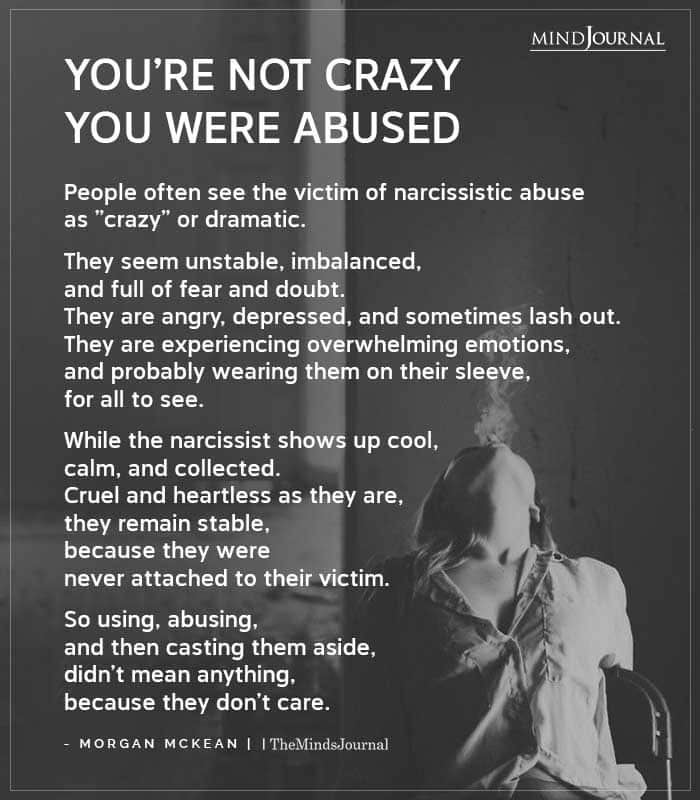
A great many suffer from Complex Post Traumatic Stress Syndrome, Stockholm Syndrome, Infantile Regression, Soul Rape, and other symptoms that need to be attended to.
Researchers were baffled as to why so many clients coming from the general public were presenting themselves in therapy with such a wide cluster of symptoms being present. They began to ask questions, such as “What have these clients got in common, and what is the cause of such distress?”.
Related: Victim Of a Narcissist: 7 Signs You’ve Arrived as a Survivor of Narcissistic Abuse
To add to the conundrum, these clients were also showing signs of emotional and psychological trauma, which every therapist knows is the result of extraordinarily stressful events that shatter a person’s sense of security, making them feel helpless and vulnerable.
However, these clients did not report having knowledge of being through trauma of such magnitude.
It was through researchers, and the asking of questions specifically aimed at finding out what was happening in these clients’ environments that finally a solution was found.
The data revealed that the people who are presenting with these clusters of symptoms did in fact have one thing in common, they were all victims of narcissistic abuse somewhere in their lives, especially as children (usually a narcissistic parent, or significant other).
Up to now, little or nothing has been written in the medical literature regarding the victims who are exposed to those suffering from Narcissistic Personality Disorder, and the consequences of that abuse on those individuals.
Today we are experiencing a narcissistic epidemic, and through a lack of training in Psychotherapy Courses, most therapists, through no fault of their own, have had little or no training in this area.
This must be addressed now because whereas those clients who are suffering from Narcissistic Personality Disorder are most likely to be seen by psychiatrists in mental health services, it is those clients who have been victims of narcissistic abuse, (those who may be suffering from Narcissistic Victim Syndrome) that are the people most likely to turn up in your practice looking for a therapist to help them take back control of their lives.
As a therapist, before you can fully assist a victim recover after an encounter with a grossly narcissistic personality, it is imperative that you be informed fully about the insidious narcissistic behavior the victim may have experienced, and also understand the effects of that behavior on that victim.
If you, as a therapist do not take the time to become informed about the two faces of the narcissist (Dr. Jackal and Mr. Hyde), you will not be effective in working with the victims. You also need to understand the insidious behavior of the narcissist and the long-term effects of that behavior on the victim.
Familiarize yourself with what narcissistic rage is, what causes it, and its relation to the narcissist’s shameful feelings. Understanding the extent of the narcissist’s rage will prepare you to understand the level of control they had over the victim.
It is also important to be able to distinguish between the different types of narcissistic behavior, namely overt and covert narcissism. The destructive effects of gaslighting behavior on the victim, and their cognitive dissonance as a result of the abuse.
Related: Why Narcissistic People Love To Ruin Birthdays And Holidays
In order to provide you with some of those insights, I shall be putting up free articles about the Narcissistic Personality from time to time, but I also recommend that you broaden your sights by also researching this subject through the many articles written, and through other informative sites on the internet.
Written By Christine Louis de Canonville
Originally Appeared On Narcissist Behavior

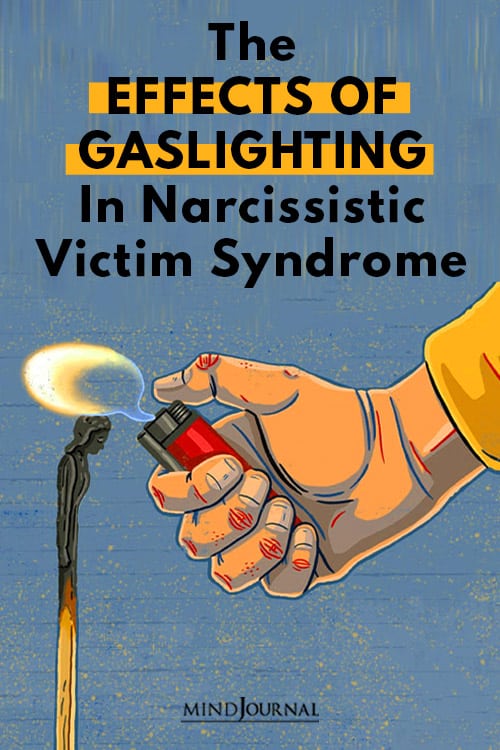






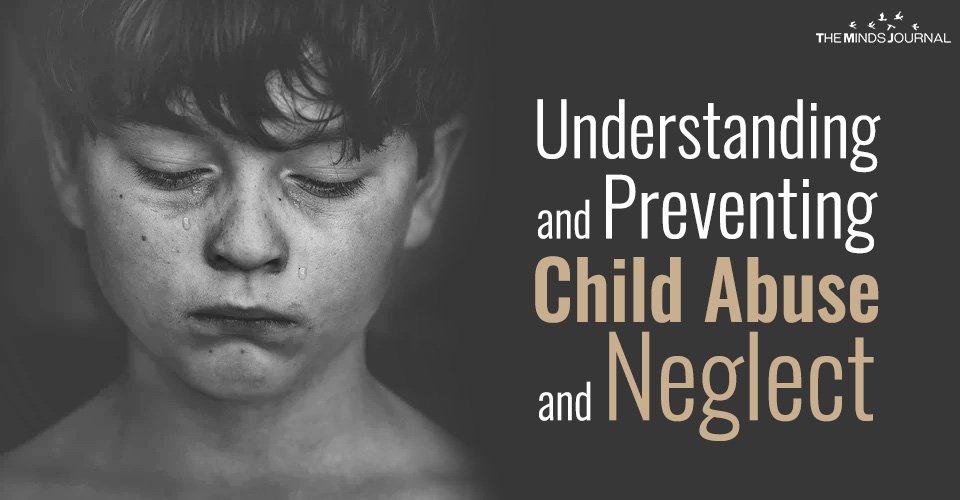


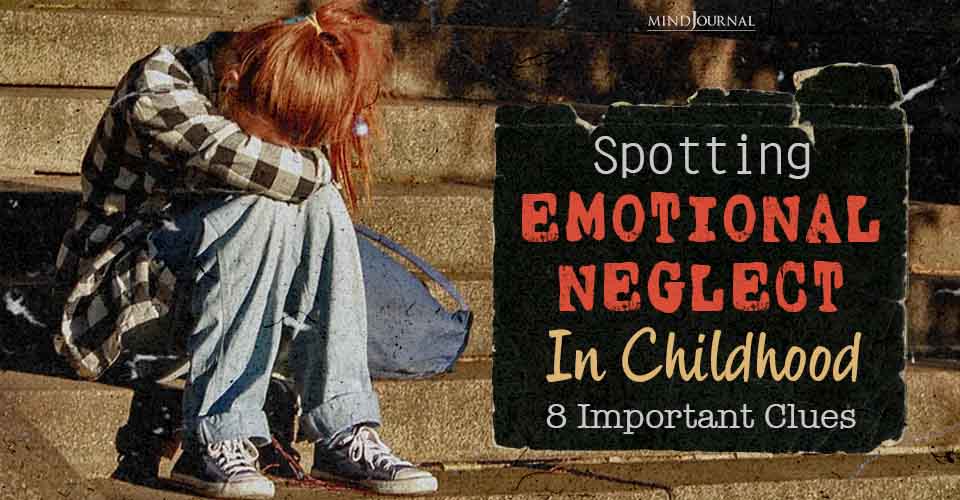

Leave a Reply